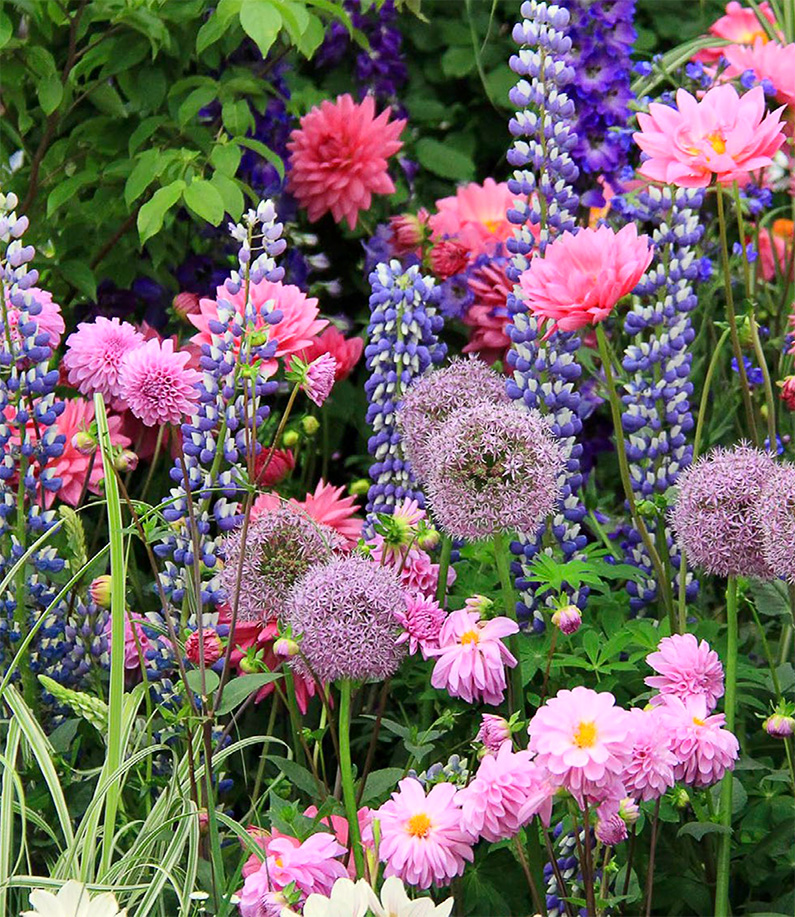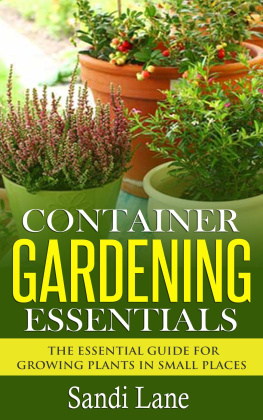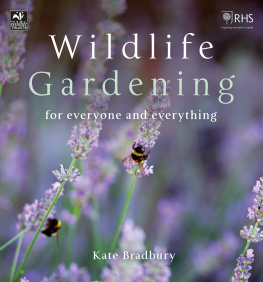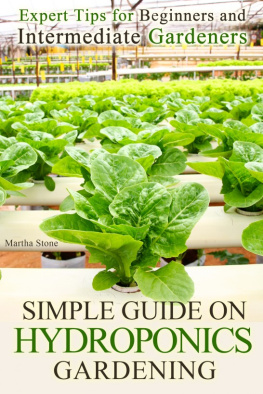Ground
Rules

100 easy lessons
for growing a
more glorious
garden

Kate Frey
Timber Press Portland, Oregon

Introduction
Some of us are born with a talent for gardening; others come to gardening later in life. Whether youre experienced or a novice, there is much to learn in order to be able to create and maintain a successful garden. This book contains 100 essential rules for you to discover and use. Its my hope they will steer you toward success at every step and help you avoid mistakes.
Successful gardens are healthy, thriving places that lift us up and create joy. They are places where practicality and aesthetics are wedded. A garden must work well within its local conditions and the framework of your life. Gardens form an important link with nature and the changing seasonsthe cycle of life. Many studies have shown time spent in nature benefits us by lowering stress levels and making us feel better emotionally. A garden that focuses on plants rather than hardscape like pools, decks, and patios can be an extension of nature. Gardens give us the satisfaction of creating and tending a special place with our own hands. They are places where we both give and receive. Imagine sweet fragrances wafting, soft leaves rustling in the breeze, shade on a hot afternoon, and an ever-changing array of flowers embroidering the yard. Imagine too the joyful songs and forms of bright yellow goldfinches against the clear blue sky, a velvet-upholstered bumblebee on a purple salvia, butterflies like snips of tapestry, and hummingbird duels over crimson bloomsall elements of life you have enabled. Gardens can be your own personal paradise.
This book is divided into six complementary sections that take you from the very first planning stages, through the joy that plants bring, soil and its important underground processes, how to be wise with water, how to be a good garden parent, ways to invite wildlife into your garden, and finally to creating a garden of earthly delights. Taken as a whole, it offers a system of practices and design considerations that address every aspect of gardening.
This is a distillation of what I have learned through my many years of gardening and designing gardens professionally in the United States and around the world. It is an effort to engage everyone with the many pleasures gardening offers. I love the subject more and more each day, and I hope you will too.
Planning
Your
Paradise


This lovely scene is the result of careful planning for look and function. It illustrates a variety of seating areas, screening, pathways, and transitions from one level to another. A variety of plants soften the hardscape and tie everything together.
Rule
1
Become your own garden designer.
Developing a basic garden design is relatively simple. First, consider the necessities of access to the front door, front yard, and backyard. Make paths wide enough for two people to walk side by side. Decide where they begin and end. Do you like straight lines or curves? The journey should be as beautiful as the destination. Do you want privacy or an open front yard that all can see? You can screen or filter the view with plants, not just fences. Is there a place for a fountain, bird bath, or bench? Access to the backyard should be large enough for transporting materials, wheelbarrows, and other necessities. Think about a seating area or patio big enough for tables and chairs. Do you want a lawn for kids to play on? Surround it with planter beds. Where should the vegetable garden go? Some people like it far away, others near the house. Planting beds against the house or by fences or sheds can enhance, hide, or screen them. What do you want to see when you look out the window? Using hoses, landscape flags, lines of flour, or spray paint, mock up locations of paths, seating areas, and bedslive with them, then make necessary changes before beginning the work.

The plants in this exuberant composition, Salvia Caradonna, Penstemon Garnet, yarrow, lavender, and Verbascum nigrum, look great together and thrive because they share the same needsdrought resistance, low soil fertility, and a situation with full sun.
Rule
2
Make a list of plants or colors you like.
Harmonious gardens use plants that look good together. Select plants complementary in color and form, with compatible needs. For example, if you like purple foliage, begin with something like a Grace purple smoke bush (Cotinus Grace). It does best in full sun, is drought resistant, and doesnt need highly fertile soil. Add crimson autumn sage (Salvia greggii), red hot pokers (Kniphofia species), garnet or deep purple penstemons, the single red rose Alatissimo, pale yellow sunroses (Helianthemum species), and silver dusty miller for a traffic-stopping combination. Use this approach for whatever color or plant combination appeals to you. But remember: the best gardens are those with plants that are appropriate to and reflect your local area.

Lenten roses, dahlias, Shasta daisies, and salvias (clockwise from top left) can help you use the entire growing season and keep your garden in bloom from late winter through late summer.
Rule
3
Plan for a long season of interest.
Include plants in your garden that bloom early, mid, and late season. Bulbs are great additions for early spring blooms. Crocuses, fawn lilies, scillas, snowdrops, and grape hyacinths are all lovely early garden subjects and return year after year. Plants like Lenten roses (Helleborus species), daphnes, sarcoccocas, and manzanitas (Arctostaphylos species) bloom early in the year and are very low maintenance, with foliage that always looks good. Midspring and summer contain too many plants to list, but fall plants need mention. California fuchsias (Epilobium species) put on a spectacular show, as do many salvias like S. greggii, S. splendens Van Houttei, Waverly, Amistad, Anthony Parker, Phyllis Fancy, Indigo Spires, and Mulberry Jam. (Many late-blooming salvias are hardy only in mild areas but can be grown as annuals in cold climates.) Asters are great plants for the fall garden and there are selections for every climate. A gorgeous white aster is Monte Cassino (Symphyotrichum pilosum var. pringlei Monte Cassino). Lady in Black aster (Symphyotrichum lateriflorum Lady in Black) has dark foliage that looks great all season.















